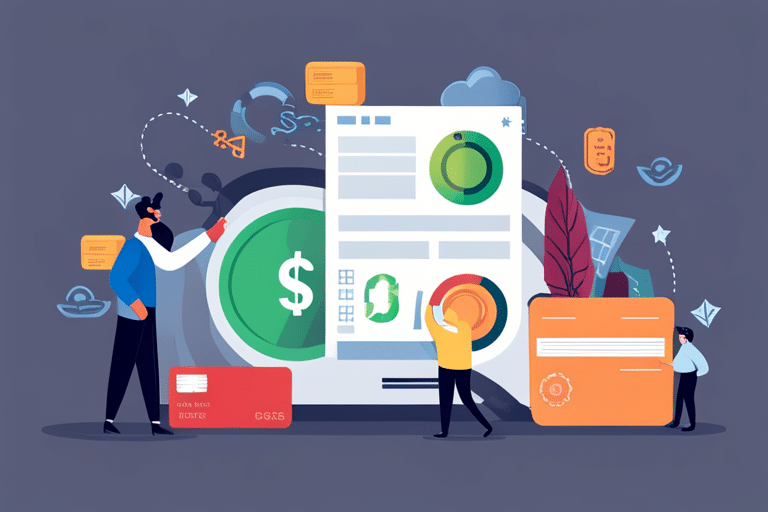You want to master your credit score, right? Well, buckle up because we’ve got a complete guide that will blow your mind.
Let’s dive into the world of credit utilization and how it impacts your precious score. We’ll break down all the factors that come into play, reveal the ideal percentage you should aim for, and even give you strategies to lower your utilization like a pro.
Get ready to take control of your financial destiny!
Key Takeaways
- Lowering credit utilization is crucial for improving your credit score.
- Aim for a utilization rate below 30%.
- Payment history is crucial for improving credit score, so always pay bills on time and in full.
- Credit inquiries can have a temporary negative impact on creditworthiness, so be cautious about applying for new credit frequently.
Understanding Credit Utilization Ratio
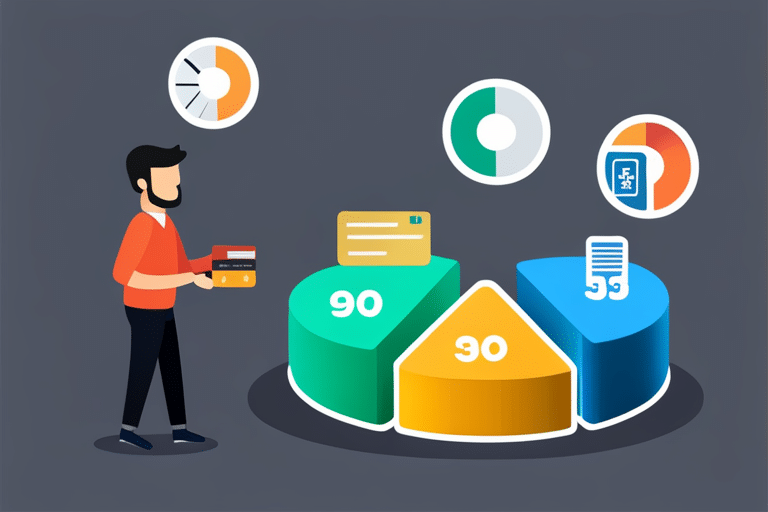
To understand your credit utilization ratio, you’ll need to calculate the amount of credit you’re currently using compared to your total available credit. It’s like figuring out how much chocolate cake you’ve eaten at a buffet compared to the whole dessert spread. So, let’s dive into this scrumptious world of credit!
Credit utilization is simply the fancy term for how much of your available credit you’re using. Imagine having a plate full of different types of cake, and each slice represents a portion of your credit limit. Now, if you devour half the plate, that’s high credit utilization; but if you only nibble on one slice, that’s low credit utilization.
Lowering credit utilization is key to improving your score. Think about it: if all those slices are gobbled up and there’s no room for more cake (credit), it shows lenders that you may be relying too heavily on borrowed funds.
Your goal should be to keep your credit utilization below 30% – just like leaving some space on your plate for other delicious treats! This means not maxing out all your cards and keeping balances as low as possible.
Understanding this concept is crucial because high credit utilization can negatively impact your score. And speaking of scoring points, let me tell you about the factors that affect your overall credit score…
Factors Affecting Your Credit Score

Hey there, credit explorer!
Let’s dive into the nitty-gritty of factors that affect your credit score.
First up, we’ll talk about the importance of payment history – because paying your bills on time is like hitting a high note in the symphony of good credit.
And speaking of harmony, we’ll also explore how those pesky credit inquiries can impact your score – it’s like adding an unexpected riff to your financial melody.
Payment History Importance
Understanding your payment history is crucial when it comes to improving your credit score. It’s like a report card for your financial responsibility, and lenders pay close attention to it. Late payments or defaults can have a negative impact on your score, while consistent on-time payments can boost it up. So, make sure to always pay your bills on time and in full.
But payment history isn’t the only factor that affects your credit score. Another important aspect is credit utilization. This refers to the amount of available credit you’re using at any given time. To improve your score, try not to max out your credit cards or carry high balances. Instead, aim for a utilization rate below 30%. If you do need to use more of your available credit, consider making multiple smaller payments throughout the month rather than one large payment.
Credit Inquiries Impact
Be mindful of how often you apply for new credit cards or loans, as each credit inquiry can have a temporary negative effect on your overall creditworthiness.
Now, I know what you’re thinking – ‘But wait, isn’t it good to have more credit options?’ While having access to different credit options is important, applying for too many at once can raise red flags for lenders. Here’s why:
-
Impact on Credit Score: Every time you apply for new credit, a hard inquiry is made on your credit report. Multiple inquiries within a short period can lower your score temporarily.
-
Perception of Risk: Lenders may view frequent applications as a sign of financial instability or desperation for credit. They want to lend to responsible borrowers who are not constantly seeking additional debt.
-
Future Loan Approvals: Excessive inquiries could make it harder for you to get approved for future loans or credit cards. Lenders may see you as a higher risk and offer less favorable terms.
How Credit Utilization Impacts Your Score
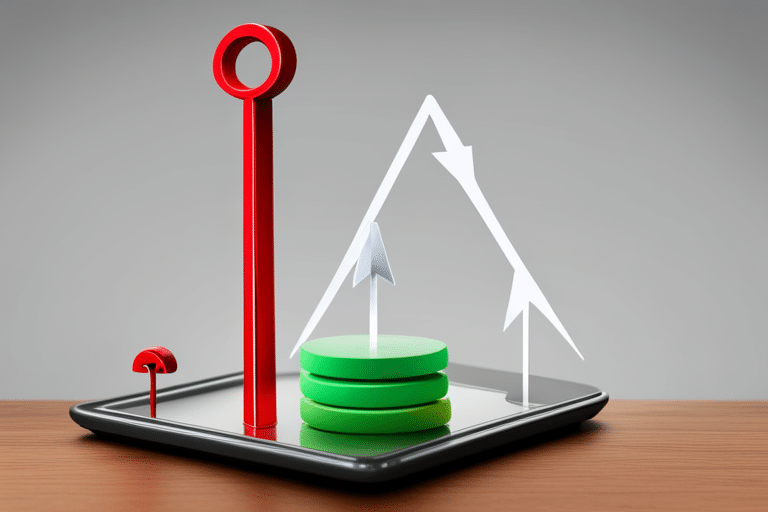
Hey there!
Let’s dive into the fascinating world of credit utilization and how it can impact your credit score.
We’ll explore why lowering your utilization can actually improve your score, and we’ll even discover the magical number known as the optimal utilization percentage.
Utilization and Credit Scores
To improve your credit score, you should aim to keep your credit utilization ratio below 30%. This means that you should only use up to 30% of the total credit available to you.
Keeping your credit utilization low is crucial for maintaining a healthy credit score. Here are three strategies to help you manage your credit utilization effectively:
-
Pay off balances: Make it a priority to pay off any outstanding balances on your credit cards. By doing so, you’ll reduce the amount of debt you owe and lower your overall credit utilization.
-
Increase your credit limit: Contact your creditors and ask for a higher credit limit. This will increase the amount of available credit and automatically bring down your utilization ratio.
-
Monitor regularly: Keep an eye on your credit utilization by regularly checking your statements or using online tools that provide real-time updates on your ratio.
Lowering Utilization for Improvement
Now that you understand the impact of credit utilization on your score, let’s dive into some strategies for lowering it and improving your overall creditworthiness. It’s time to take control of your financial future!
One effective strategy is to pay off existing balances or transfer them to a lower interest rate card. This will help lower your overall utilization ratio and show lenders that you are responsible with your credit.
Another approach is to keep a close eye on your credit utilization progress. Regularly monitoring this percentage will allow you to make adjustments as needed and ensure that you’re on track towards reaching your goals.
Optimal Utilization Percentage
One effective way to improve your creditworthiness is by maintaining an optimal utilization percentage. This means using only a portion of your available credit, typically around 30%.
Here are three strategies to help you achieve this:
-
Keep track of your credit utilization: Regularly monitor your credit card balances and make sure they stay below the recommended threshold. You can use online tools or mobile apps to easily track your usage.
-
Pay off balances in full: To maintain a low utilization percentage, it’s important to pay off your credit card balances in full each month. This not only helps improve your credit score but also saves you from paying unnecessary interest charges.
-
Consider increasing your credit limit: If you’re consistently maxing out on your available credit, it may be worth asking for a higher limit from your credit card issuer. This can help lower your overall utilization ratio and boost your score.
By implementing these optimal utilization strategies and regularly monitoring your credit utilization, you’ll be well on your way to improving your overall financial health and increasing your creditworthiness.
Ideal Credit Utilization Percentage
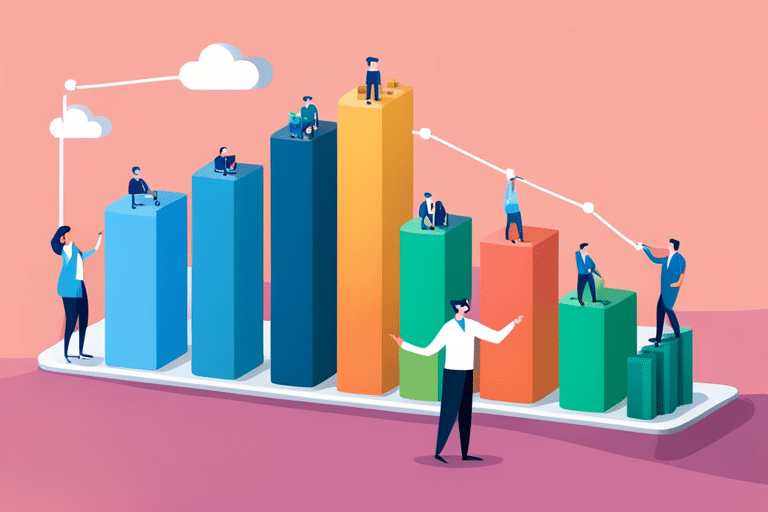
Maintaining a low credit utilization percentage is crucial for improving your credit score. But what exactly is the ideal credit utilization percentage? Well, my friend, it’s time to dive into the world of numbers and percentages! Let’s take a look at some strategies for lowering your utilization and calculating that optimal percentage. Trust me, by the end of this, you’ll be a master at playing this credit game!
First things first, let’s talk about lowering your utilization strategies. The key here is to keep your balances on all your credit cards as low as possible. Spread out your purchases across multiple cards and avoid maxing out any single card. Remember, it’s not just about how much you owe but also about how much available credit you have.
Now, let’s calculate that optimal percentage! Picture this: a 3-column and 5-row table magically appearing before you:
| Credit Utilization Percentage | Impact on Your Credit Score |
|---|---|
| Below 10% | Excellent |
| 10%-20% | Very good |
| 21%-30% | Good |
| 31%-40% | Fair |
| Above 40% | Poor |
This table represents the general consensus among experts regarding the impact of different utilization percentages on your credit score. So aim for that sweet spot below 10%, my friend!
Strategies to Lower Credit Utilization

To lower your credit utilization, it’s important to keep your balances on all cards as low as possible. Lowering your credit utilization can have a positive impact on your credit score and show lenders that you are responsible with your credit.
Here are three strategies to help you lower your credit utilization:
-
Pay off high balances first: Start by focusing on paying off the cards with the highest balances. By reducing those big numbers, you’ll see a significant decrease in your overall credit utilization.
-
Increase your credit limit: Another way to lower your credit utilization is by increasing your available credit limit. You can do this by asking your card issuer for a limit increase or applying for a new card with a higher limit. Just be sure not to use the extra available credit and fall into more debt!
-
Spread out expenses: Instead of using one card for all of your purchases, try spreading them out across multiple cards. This way, no single card will have a high balance, keeping your overall credit utilization low.
By implementing these strategies, you can work towards lowering your credit utilization and improving your financial health. Remember to regularly check in on your balances and strive to keep them as low as possible in relation to the total available credit.
Keep up the good work! Soon enough, you’ll be mastering the art of maintaining a healthy credit utilization ratio like a pro!
Impact of High Credit Utilization on Your Score

Hey there! Let’s talk about the impact of high credit utilization on your score.
Trust me, it’s not a pretty picture. When you’re maxing out those credit cards and using up most of your available credit, it can seriously tank your score and give off the impression that you’re not exactly a reliable borrower.
And let’s be real, nobody wants to be seen as less creditworthy than they actually are! So buckle up, because we’re diving into the negative effects and lower perception of creditworthiness caused by high credit utilization.
Negative Score Effects
Excessive credit utilization can have a negative impact on your credit score. But don’t worry, mastering the art of managing your credit utilization is not as daunting as it may seem. Here are three key points to keep in mind:
-
Pay off your balances: One of the best strategies for lowering your utilization is to pay off your outstanding balances. By keeping your debt levels low, you show lenders that you are responsible with credit.
-
Spread out your purchases: Instead of maxing out one card, try spreading out your purchases across multiple cards. This will help keep your overall utilization ratio lower and improve your score.
-
Increase credit limits: Another effective practice is to request a higher credit limit on existing cards or apply for new ones. This will give you more available credit and help reduce the percentage of credit you’re using.
Lower Creditworthiness Perception
Maintaining a high creditworthiness perception is crucial for lenders to view you as a reliable borrower, so it’s important to be mindful of your overall financial health. Lower credit limits can negatively impact your creditworthiness perception, as they can limit the amount of available credit you have. This means that if you have a lower credit limit and consistently use a large percentage of it, your credit utilization ratio will be higher, which can raise red flags for lenders. Additionally, frequent loan applications can also lower your creditworthiness perception because they indicate that you may be relying too heavily on borrowed funds. By understanding how these factors affect your creditworthiness, you can take steps to manage them effectively and improve your overall financial health.
| Lower Credit Limits | Credit Utilization | Loan Applications |
|---|---|---|
| Can restrict available credit | High utilization ratio negatively affects score | Frequent applications raise concerns |
| May lead to higher utilization ratio | Keep utilization below 30% for best results | Apply only when necessary |
| Consider requesting higher limits if needed | Pay off balances in full each month | Research and compare before applying |
Now that we’ve explored the impact of lower credit limits, high credit utilization, and frequent loan applications on your creditworthiness perception, let’s dive into some best practices for managing your credit utilization effectively.
Best Practices for Managing Credit Utilization

To effectively manage your credit utilization, it’s important to follow some best practices. After all, keeping a close eye on your credit utilization can make a world of difference in maintaining a healthy credit score. Don’t worry, mastering this skill doesn’t have to be as daunting as it sounds! Here are three strategies that will help you navigate the world of credit utilization with ease:
-
Keep your balances low: Aim to keep your credit card balances well below their limits. It’s like trying to keep only a handful of marshmallows in your hot cocoa instead of overflowing the cup – moderation is key! By keeping your balances low, you’ll demonstrate responsible borrowing habits and show lenders that you’re not relying too heavily on credit.
-
Pay off debts regularly: Make it a habit to pay off your debts on time and in full each month. Think of it as hitting the reset button on your financial situation – starting fresh every billing cycle. Not only will this help maintain a healthy credit utilization ratio, but it also shows lenders how reliable and trustworthy you are when it comes to managing debt.
-
Monitor your credit utilization: Regularly check in on your overall credit utilization ratio by tracking both individual card balances and total available credit across all accounts. This way, you can catch any potential issues or discrepancies early on before they negatively impact your score.
Calculating Your Credit Utilization Ratio
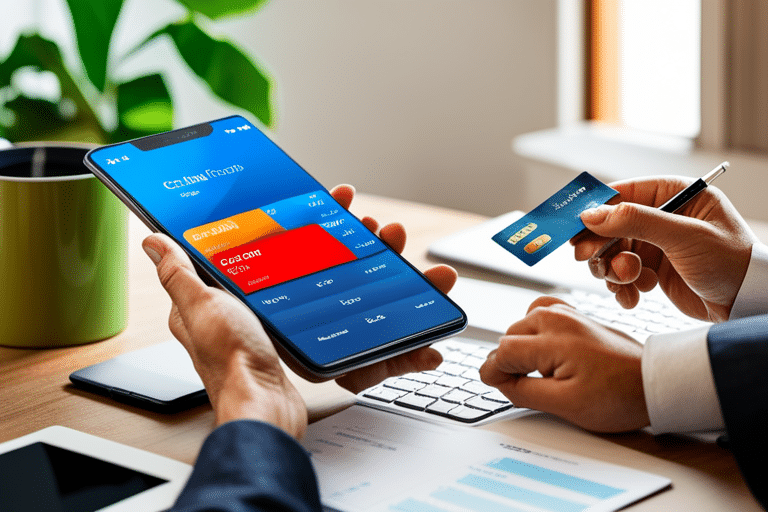
Calculating your credit utilization ratio is a straightforward process that involves dividing your total credit card balances by your total available credit. It’s like making a delicious sandwich – you just need to gather the ingredients and put them together in the right proportions.
So, let’s grab our financial spatula and dive into the world of credit utilization!
To calculate your credit utilization ratio, start by adding up all the balances on your credit cards. This is the amount you owe to your creditors. Then, tally up the total amount of credit available to you across all your cards. This is like counting all those yummy sandwich fillings waiting in your fridge.
Now comes the fun part! Take that sum of balances and divide it by the sum of available credit. Multiply this number by 100, and voila – you have calculated your credit utilization ratio! Think of it as spreading mayo on bread – it’s all about finding that perfect balance.
Understanding this ratio is crucial because it can have a significant impact on your score. When high utilization creeps into play, lenders may view it as a sign that you’re relying too heavily on borrowed money, which can raise eyebrows faster than over-toasting bread.
Credit Utilization and Available Credit
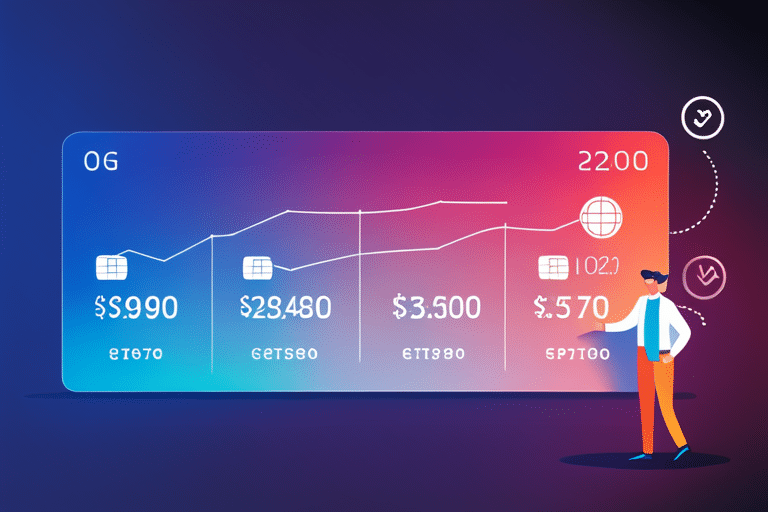
Understanding how credit utilization and available credit work together is essential for managing your overall financial health. It’s like a delicate dance between two partners – the Credit Utilization Ratio (CUR) and Available Credit, moving in perfect harmony to keep your credit score in check. So, let’s dive into this enchanting world and unravel its secrets!
Here are three key things you should know about the relationship between available credit and your credit utilization ratio:
-
The higher your available credit, the lower your CUR: Picture this: You have a $10,000 credit limit on your shiny new card. But you only have a balance of $1,000 on it. In this scenario, your CUR would be 10%. However, if you had a balance of $5,000 instead, your CUR would shoot up to 50%. Moral of the story? The more wiggle room you have with available credit, the better it is for keeping that CUR low.
-
Maxing out cards can hurt your score: Imagine going on a shopping spree and charging everything to one card until it screams for mercy! While it may seem fun in the moment (retail therapy anyone?), maxing out cards can actually damage your score. Remember that CUR we talked about? Well, maxed-out cards can send that ratio skyrocketing and give lenders cause for concern.
-
It’s not just about individual cards: Your overall CUR matters too! Even if you have multiple cards with low balances individually but collectively they add up to a high percentage of their total limits – say hello to potential credit score troubles! Keeping an eye on both individual card balances as well as overall utilization is crucial for maintaining good financial health.
Now that you understand how available credit and CUR are intertwined let’s explore another fascinating aspect – different types of credit and their impact on utilization ratios…
Credit Utilization and Different Types of Credit

Different types of credit, such as credit cards and loans, can have varying impacts on your overall credit utilization. Managing your credit utilization is crucial to maintaining a healthy credit score. Let’s take a closer look at how different credit utilization methods can affect your financial standing.
| Credit Type | Impact |
|---|---|
| Credit Cards | High impact |
| Loans | Moderate impact |
| Mortgage | Low impact |
| Student Loans | Medium impact |
Credit cards are like the divas of the credit world; they demand attention and can have a significant impact on your overall credit utilization. With their high interest rates and potential for overspending, it’s important to keep a close eye on how much you owe versus your available credit limit.
Loans, on the other hand, are more like the reliable sidekicks. While they do contribute to your overall debt load, their impact on your credit utilization is not as drastic as that of credit cards. Just make sure you’re making timely payments and managing these loans responsibly.
Mortgages are like the silent heroes in the world of credit utilization. They have a low impact because they typically involve large amounts of money spread out over many years. As long as you’re making regular payments, they won’t cause any major fluctuations in your usage rate.
Lastly, student loans fall somewhere in between with medium impact. While they may not be as influential as credit cards or mortgages, it’s still important to manage them effectively to avoid any negative effects on your overall score.
Understanding these different types of credits and their respective impacts on your overall utilization rate is vital for effective management of your finances. Now let’s dive deeper into the relationship between credit card balances and overall utilization in order to gain a comprehensive understanding of this topic.
Credit Utilization and Credit Card Balances
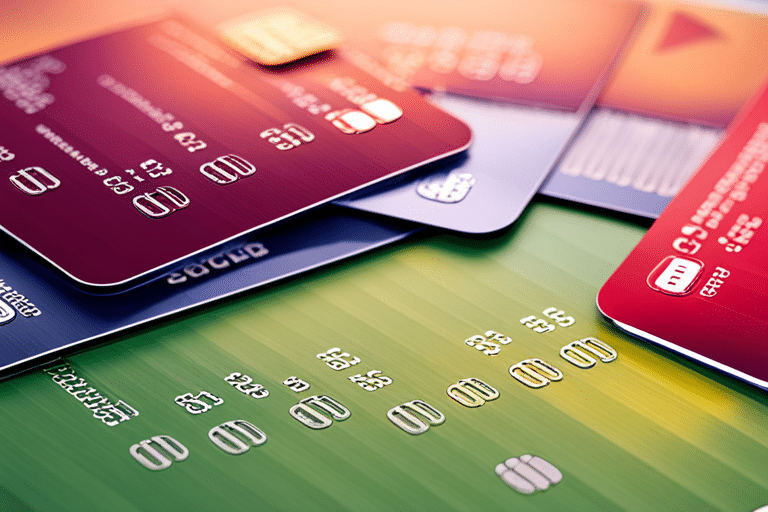
Credit card balances play a significant role in determining your overall credit utilization rate. It’s like a balancing act, where you have to keep your credit utilization low while still using your credit cards responsibly. Let’s dive into the world of credit utilization and explore how your credit card balances can affect your financial life.
The magic number: Your credit utilization rate is simply the amount of credit you’re using compared to the total amount of credit available to you. This ratio is crucial because it accounts for 30% of your overall credit score. So, keeping a low balance on your cards is key to maintaining a good score.
The sweet spot: Experts recommend keeping your credit utilization below 30%. That means if you have a $10,000 limit across all your cards, try not to carry more than $3,000 in balances at any given time. This shows lenders that you’re responsible with managing debt and can handle more credit if needed.
Negotiating power: Did you know that you can actually negotiate with your creditors for an increase in your credit limits? By doing so, you effectively decrease your overall credit utilization rate without even spending a dime! Plus, having higher limits gives you more flexibility and could potentially boost your score.
Monitoring and Improving Your Credit Utilization

To effectively monitor and improve your credit utilization, you should regularly review your credit card balances and aim for a utilization rate below 30%. But hey, don’t worry! Managing your credit utilization is not as intimidating as it sounds. In fact, it can be quite empowering once you get the hang of it.
Picture this: You’re on a journey to improve your credit scores, and monitoring your credit utilization is like having a trusty compass in hand. It shows you the way to financial success. So grab that compass and let’s dive right in!
First things first, take a moment to glance at your credit card balances. Are they creeping up towards their limits? Or are they comfortably lounging somewhere below that magical 30% mark? If it’s the latter, well done! You’re already on the right track. But if you find yourself inching closer to those limits, fear not – there are simple steps you can take to turn things around.
One trick is to pay down those high balances as soon as possible. By tackling them head-on, you’ll see an immediate improvement in your credit scores. Another tip is to consider spreading out your spending across multiple cards instead of maxing out just one. This will help keep your overall credit utilization low.
Remember, managing your credit utilization doesn’t have to be a chore. Think of it as a game where every move counts towards improving your financial wellbeing. So stay vigilant, keep those balances in check, and watch as your credit scores soar towards new heights!
And with that final piece of advice ringing in your ears like joyful music from a wind chime on a sunny day, go forth and conquer the world of credit utilization management!
Frequently Asked Questions
Can Credit Utilization Be Completely Eliminated From Affecting Your Credit Score?
You can’t completely eliminate the impact of credit utilization on your score. Lenders consider it when approving loans. But don’t fret! By managing your credit wisely, you can minimize its effect and improve your chances of loan approval.
How Long Does It Take for Changes in Credit Utilization to Impact Your Credit Score?
Hey, you’re probably wondering how quickly changes in credit utilization impact your credit score. Well, it can vary, but generally, you’ll start seeing the effects within a month or two. Oh, and income doesn’t affect credit utilization!
Are There Any Exceptions or Special Considerations for Credit Utilization Ratios for Individuals With Low Credit Scores?
When it comes to credit utilization ratios for folks with low credit scores, there are indeed some special considerations. Your limited credit history can have a big impact on your score. Keep reading for all the deets!
Does Credit Utilization Have a Greater Impact on Your Credit Score if You Have a Higher Number of Credit Accounts?
If you have a higher number of credit accounts, your credit utilization can have a greater impact on your score. It’s important to calculate it accurately and understand the relationship between utilization and credit limits.
Are There Any Specific Strategies or Tips for Managing Credit Utilization for Individuals With Fluctuating Income?
Hey, you with the fluctuating income! When it comes to managing credit utilization, here’s the deal: keep your balances low and pay off those cards regularly. It’ll boost your score, no sweat!
Conclusion
So there you have it, my friend! You’ve reached the end of this wild credit utilization journey.
Remember, keeping your credit utilization ratio low is key to maintaining a healthy credit score.
But here’s an interesting tidbit for you: did you know that people with excellent credit scores typically have a credit utilization ratio of around 10%? That means they’re not maxing out their cards and are being responsible borrowers.
So go forth, my savvy spender, and conquer those credit card balances like the financial superhero I know you can be!

